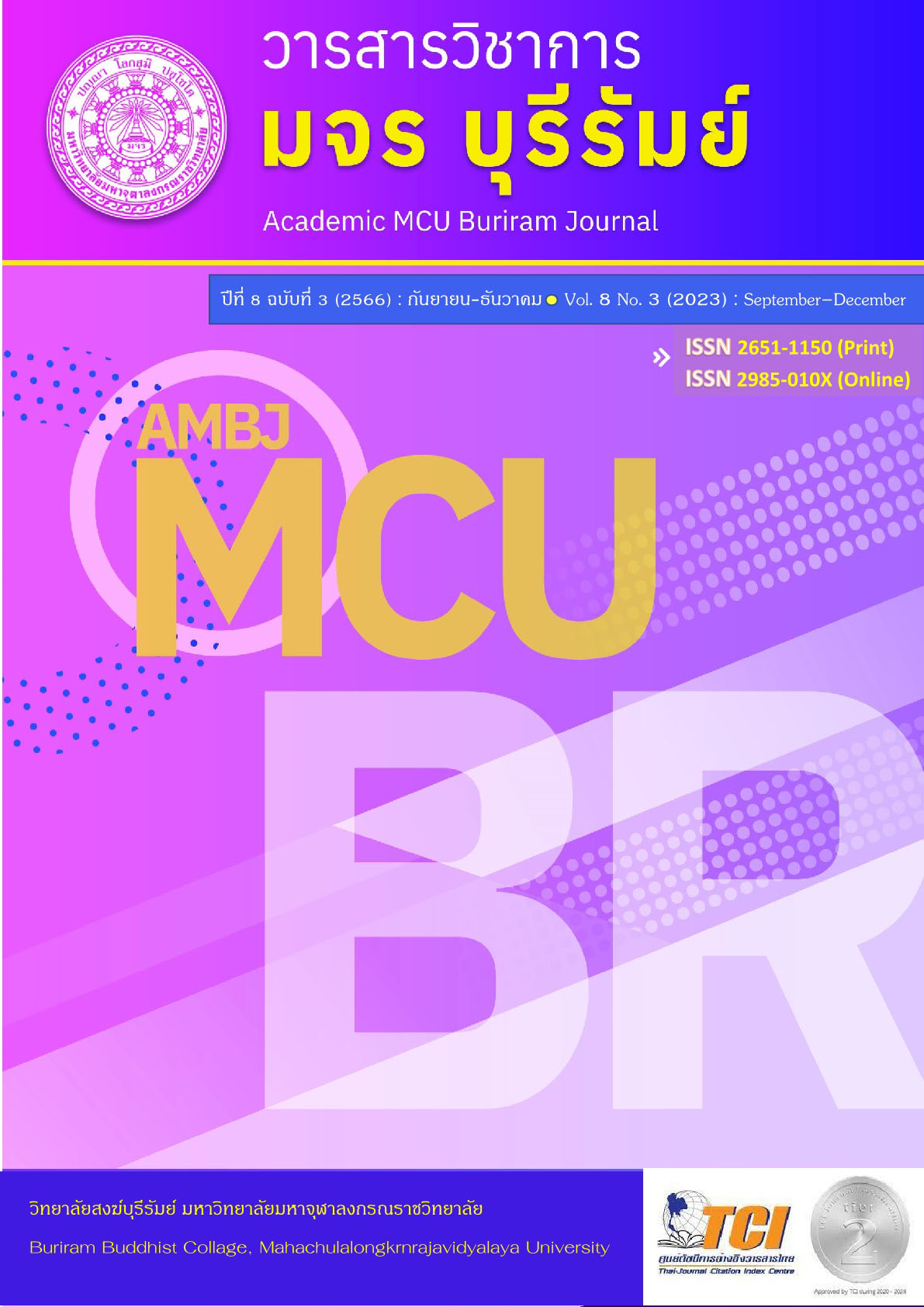Effect of Implementing Picture Word Inductive Model on Grade 3 Student’s Reading and Writing English Ability on Animal Unit
Keywords:
Picture Word Inductive Model, Reading and Writing English AbilityAbstract
The purposes of this research were: 1) to compare grade 3 students’ reading and writing abilities on Animal unit before and after learning through Picture Word Inductive Model learning and 2) to compare students’ learning achievement for reading and writing English on Animal unit through the Picture Word Inductive Model learning to be effective according to criteria 60. The samples were 18 of grade 3 students at Tumbonbanpho School, Ban Pho Subdistrict, Mueang District, Nakhon Ratchasima Province, in the second semester of the academic year 2023. The research tools used in this study were 3 lesson plans for Picture Word Inductive Model learning, total 8 hours. And a form for measuring of achievement reading and writing skill test in English on Animal Unit. The statistics used for data analysis were mean () and Standard Deviation (SD), t-test Dependent Group and t-test One sample group were employed for testing hypotheses.
The research result found that:
1. The students were studied in an animal lesson using the Picture Word Inductive Model in the development of English reading and writing abilities, which were post- test higher than pretest significance at a level of .05.
2. The students who were studied in an animal lesson using the Picture Word Inductive Model in the development of English reading and writing abilities were 66.65%, which was post- test higher than 60% significance at a level of .05.
References
กระทรวงศึกษาธิการ. (2544). หลักสูตรขั้นพื้นฐาน พุทธศักราช 2544. กรุงเทพฯ: โรงพิมพ์องค์การรับส่งสินค้าและพัสดุภัณฑ์.
กมลชนก สุขสุวรรณ์. (2560). การสร้างและพัฒนาแบบฝึกทักษะการเขียนเรื่องจากภาพขอนักเรียนชั้นประถมศึกษาปีที่ 4-6. วิทยานิพนธ์ศึกษาศาสตรมหาบัณฑิต กรุงเทพฯ: มหาวิทยาลัยรามคำแหง.
ธารีรัตน์ อรุณศรี. (2561). การพัฒนาแบบฝึกทักษะการอ่านและการเขียนคำศัพท์ภาษาอังกฤษโดยใช้รูปแบบการสอนแบบอุปนัยโดยใช้ภาพ-คำ(PWIM) เรื่อง Learning English Vocabulary is fun and easy สำหรับนักเรียนชั้น ประถมศึกษาปีที่ 2. เข้าถึงได้จาก http://www.utdone.net/polngarn/tareerat/tareerata.html (สืบค้นเมื่อ 10 มกราคม 2566).
บุญชม ศรีสะอาด. (2560). การวิจัยเบื้องต้น. พิมพ์ครั้งที่ 10. กรุงเทพฯ: สุวีริยาสานส์น.
ปิลันธนา ศุภดล และคณะ. (2557). ผลการจัดการเรียนรู้ภาษาไทยโดยใช้ Picture Word Inductive Model ที่มีผลต่อการอ่านและการเขียนและการแต่งประโยคภาษาไทยของนักเรียนชั้นประถมศึกษาปีที่ 1 ด้วยกระบวนการศึกษาชั้นเรียน. รายงานผลการวิจัย. ขอนแก่น: โรงเรียนสาธิตมหาวิทยาลัยขอนแก่นฝ่ายประถมศึกษา (ศึกษาศาสตร์).
ไพศาล หวังพานิช. (2563). เอกสารสอนวิชาการวัดและประเมินผล. คณะศึกษาสตร์ศาสตร์: มหาวิทยาลัยวงษ์ชวลิตกุล.
วัชรา เล่าเรียนดี. (2555). รูปแบบและกลยุทธ์การจัดการเรียนรู้เพื่อพัฒนาทักษะการคิด. บทความ. พิมพ์ครั้งที่ 9. นครปฐม: โรงพิมพ์มหาวิทยาลัยศิลปากร.
สุจริต เพียรชอบ และ สายใจ อินทรัมพรรย์. (2538). การพัฒนาการสอนภาษาไทย. กรุงเทพฯ: จุฬาลงกรณ์มหาวิทยาลัย.
สุนิสา มามีสุข. (2563). การศึกษาผลสัมฤทธิ์ทางการเรียนคำศัพท์ภาษาอังกฤษโดยใช้การเรียนรู้แบบ PICTURE WORD INDUCTIVE MODEL ของนักเรียนชั้นประถมศึกษาปีที่ 3. วิทยานิพนธ์ปริญญาศึกษาศาสตร์มหาบัณฑิต. นครปฐม: มหาวิทยาลัยศิลปากร.
สุรีพรรณ ฉันวิจิตร. (2557). การพัฒนาทักษะการเขียนคำศัพท์ภาษาอังกฤษ สำหรับนักเรียนชั้นประถมศึกษาปีที่ 6. สำนักการศึกษาเทศบาลนครอุบลราชธานี: อุบลราชธานี.
อิศเรศ พิพัฒน์มงคลพร และ วิไล พิพัฒน์มงคลพร. (2558). กิจกรรมการเรียนการสอนแบบพิกเจอร์เวิร์ด Picture Word Inductive Model. วารสารศึกษาศาสตร์ มหาวิทยาลัยศิลปากร, 13(1), 17-22.
อรรชนิดา หวานคง. (2559). การจัดการเรียนการสอนภาษาอังกฤษในศตวรรษที่ 21. วารสารสถาบันวิจัยญาณสังวร, 7(2), 304-314.
Calhoun, E. F. (1999). Teaching Beginning Redding and Writing with the Picture Words Inductive model. Alexandria: Virginia USA.
Indah, N. W. (2015). The use of picture Word Inductive Model (PWIM) in the teaching and Learning Process of Writing. Journal of Islamic Education and Teacher Training, 1(1), 29-36.
Downloads
Published
How to Cite
Issue
Section
License
Copyright (c) 2023 Academic MCU Buriram Journal

This work is licensed under a Creative Commons Attribution-NonCommercial-NoDerivatives 4.0 International License.
ทัศนะและความคิดเห็นที่ปรากฏในบทความวารสารฉบับนี้ถือเป็นความรับผิดชอบของผู้เขียนบทความนั้น ไม่ถือเป็นทัศนะและความรับผิดชอบของบรรณาธิการ





